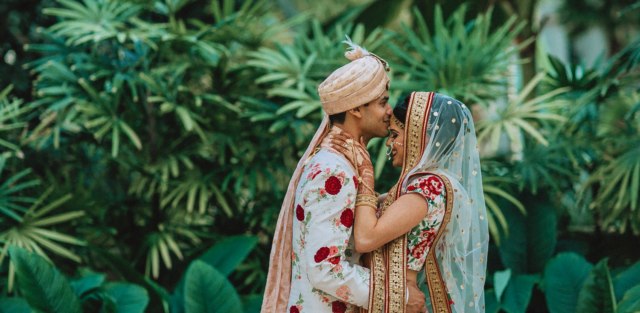Undoubtedly, Punjabi weddings are the most fun to attend. With ceremonies like hiding the groom’s shoes in exchange for money, day drinking during sangeet and Mehendi, old and bald uncles dancing crookedly to everything from Honey Singh to Mika, these weddings are a composite affair.
Apart from having these defining features, Punjabi weddings also last a while.
The ceremonies, traditions and functions span across a few weeks with the ‘shaadi ka ghar’ being the melting pot of communal and ritual interaction.
Perhaps one of the most interesting features of these massive affairs is the nosiness that drives it. Friends, relatives, neighbours, third cousins from Canada, one-time-dinner work colleagues, sisters of sisters, siblings of friends among others, suddenly attain a divine status as guests.
“They had called us for their daughter’s sister’s brother-in-law’s wedding, how can we not call them, they’re practically like your aunt and uncle,” are some sentences that are often heard.
However, there are certain unheard, unseen and unnoticed elements of a typical Punjabi wedding that need to be highlighted.
A celebration of Patriarchy
Punjabi weddings reiterate the notion of patriarchy, time and again at various points in time. Having experienced a few weddings first hand, I can surely say that the bride’s family is constantly walking on eggshells around the groom’s.
There is an element of superiority that seeps into the groom’s clan when dealing with the relatives of the bride. They are to be served at all times, be it food, affection or any form of entertainment.
The bride’s family runs around like headless chickens to cater to the needs of the groom’s family. Things that are unsaid, are also often expected to be fulfilled by reading between the lines.
Of course, there is the fact that usually, it is the bride’s family that pays for the wedding and other demands made by the groom’s family. It’s a quintessential feature of not just Punjabi but rather most Indian weddings.
Also Read: LivED It: What’s It Like To Attend A Two States Kinda Wedding In Real Life?
Additionally, while in theory dowry is not something that is openly discussed in these weddings in the modern sense, it is subtly projected into ceremonies and functions in the form of ‘gifts’, ‘money’ and ‘other articles’.
The bride’s family essentially needs to be alert and at the beck and call of that of the groom’s.
A site for power displaying power relations
Everything in a Punjabi wedding is about power dynamics. Whether it’s about how lavish the wedding is, to show to the guests of the family’s grandeur, or about the kind of family the bride/groom are marrying into, the alcohol/ food spread there is and of course the power dynamics between the two families.

No matter how much we deny it, the display of power through ritual, ceremonial and material channels is something that constitutes the social fabric of Punjabi weddings.
On the face of it, Punjabi weddings are a time of immense celebration and joy, there are some underlying issues and societal handicaps that emerge or rather are central to the nature of these social events.
Image Source: Google Images
Find the blogger at @janhaviiisharma
You’d Also Like To Read:
My Parents Got Married 2 Days After The Tragic Rajiv Gandhi Assassination In 1991






























